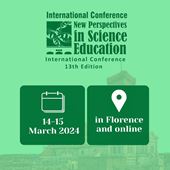Training of Literature Survey Report Writing
Kumiko Kanekawa, Kyushu University (Japan)
Tetsuya Nakatoh, Kyushu University (Japan)
Sachio Hirokawa, Kyushu University (Japan)
Abstract
Literature survey is indispensable for research activities. Thanks to the advances of search engine and database services, it is easier to obtain a list of related literature than it was ten years ago. However, writing reports on those literature is yet time-consuming and hard task as it used to be. The outcome of literature survey should contain a list of literature and explanatory text. We consider that the process of creating a literature survey consists of the three steps of (a) creating a list of literature, (b) extracting and structuring key features and (c) writing sentences that form a report. In this paper, we propose a method to create a training sample for students to experience the two steps of (b) and (c) assuming that the list of paper is given. As the first step of literature survey, we ask students to extract the research groups from the list of papers. In order to have it implemented as a simple task that does not require time and effort, judgment whether researchers are in the same group is limited to co-authorship relations. Then, students are asked to extract the top 5 research groups that have a large number of papers and researchers. At this stage, we do not ask to evaluate the paper or evaluate the author. We ask them to analyze only by what kind of researchers, what group constitutes. In the next step, we ask students to analyze the activities of research groups by extracting characteristic words of each group. Specifically, we ask them to select feature words representing the three items of problems, data and technology handled by each group. The list of research groups and the structure about the content (task, data, technology) can be tabulated as a two-dimensional matrix. This matrix can be written as sentences in two ways, in group units or in content units. In the former case, students explain the problem, data and technology of each group. In the latter case, student describe what kind of research groups are there for each three items (problem, data and technology).
Keywords:
 New Perspectives in Science Education
New Perspectives in Science Education


























